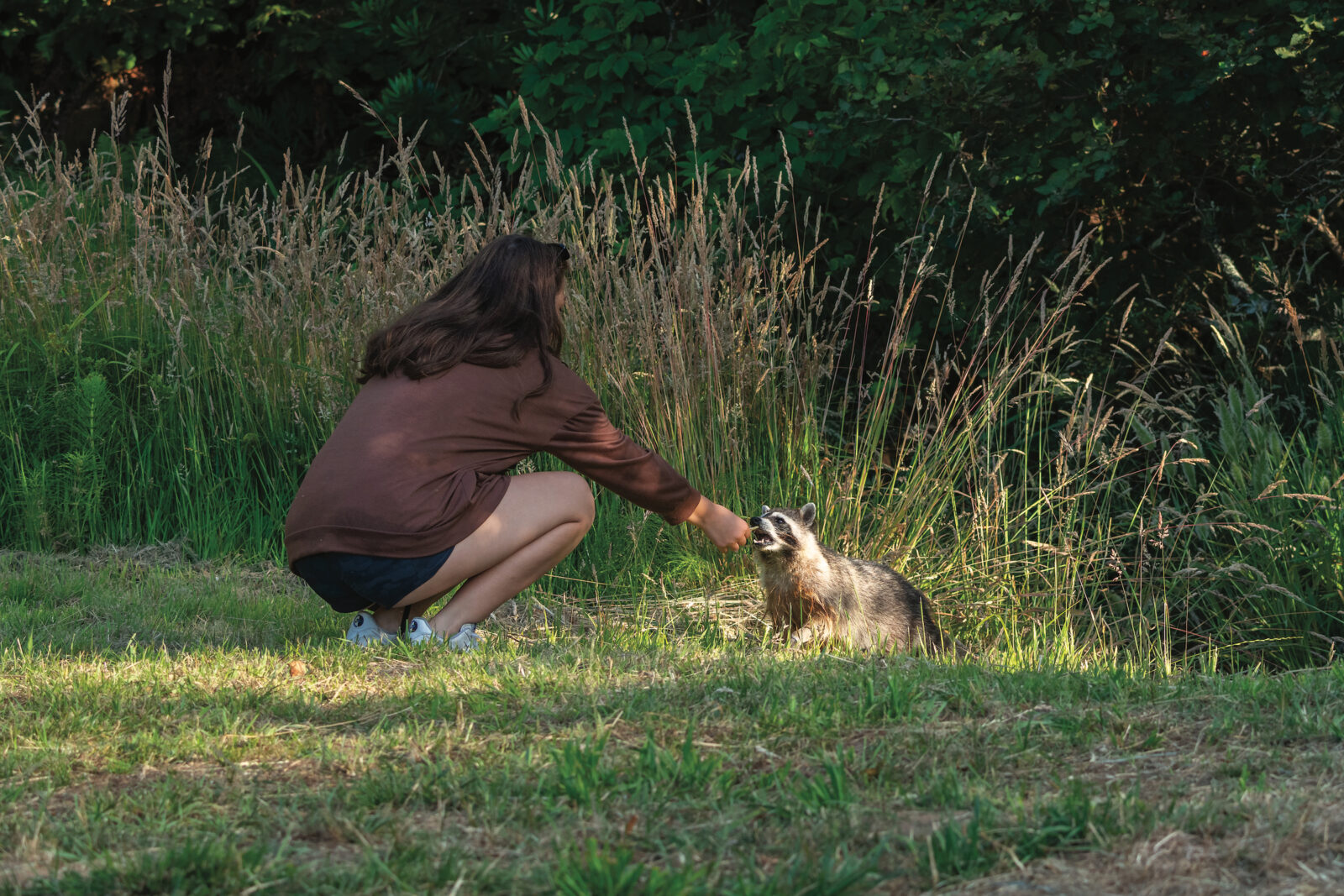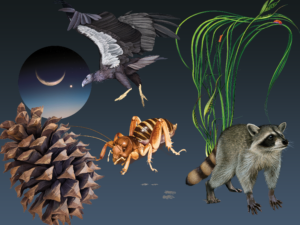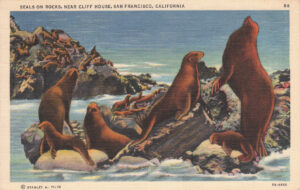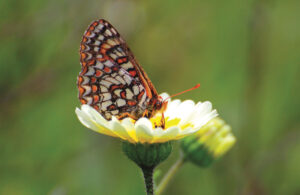I slow the car as I approach a stop sign, craning my neck to scan around the corner. It is my first time visiting a popular bald eagle nest, and I was told “you can’t miss it. There will be photographers in the road and cars everywhere.” I turn right and as I go a bit farther around the bend, I see the crowd of photographers in the bike lane, 10 cars parked along the edge of the opposite side of the road. Yep. Easy to find.
I park in a nearby dirt lot and walk over to the group of photographers. That weekday morning, about a dozen people were photographing the eagles. It was a “hot spot” for many weeks by the time I visited; I had avoided going, although I knew about it. I felt guilty being there, both because I was adding to the existing crowd and because I was there to observe the wildlife photographers, primarily. As a wildlife photographer, I am a part of the Bay Area’s local photography community and while many photographers privately tell me they are concerned about trends in the region’s wildlife photography, few are comfortable raising the issues directly with anyone on site, for fear of backlash.

Since the pandemic, I have seen the number of people participating in outdoor recreation and particularly wildlife photography in the Bay Area grow tremendously, and it is creating stress for wildlife and people. Observing wildlife is joyous and exciting, so its popularity isn’t surprising. Wilderness and time with wildlife provide an opportunity to feel connected to something much larger than ourselves. And it is natural to want to share that joy. Compelling wildlife photos inspire others to love and protect species and wild places. A powerful image portraying an environmental issue can be a catalyst for significant change. And wildlife photographers are often activists in conservation issues, donating time, money, and images to protect species and places they treasure. But I’m struck by how tensions between people continue to ramp up in the field, as does the pressure on wildlife.
As a photography community, we have the ability to improve the situation, if we make the collective effort to figure out how we share the space and time and account for differing needs of wildlife and people. I am in this mix too, as a naturalist and photographer/filmmaker, trying to figure out my impact on wildlife. I hope this essay is of service in this important conversation, offering questions we can ask ourselves and discuss as a group, then open it to the broader community.
When charismatic and photographically desirable species like bald eagles, owls, foxes, and long-tailed weasels set up nests or dens in easily accessible locations, they attract crowds of photographers. This aggregation of photographers at wildlife “hot spots” is happening at a fevered pitch in the Bay Area. The pandemic, social media, camera technology, and habituated wildlife accustomed to extended exposure to people are all likely fueling the situation.
The Bay Area has many wildlife photographers and the pandemic undoubtedly increased interest in this pursuit. It used to be that amateur wildlife photographers went out on weekends, but once “working from home” became the norm, things changed. Post-pandemic, crowds can appear seven days a week, as people increasingly have the flexibility to work from anywhere. I have seen photographers bring a laptop and cell phone to parks that have a cell signal, taking calls and emailing in between wildlife photo sessions.
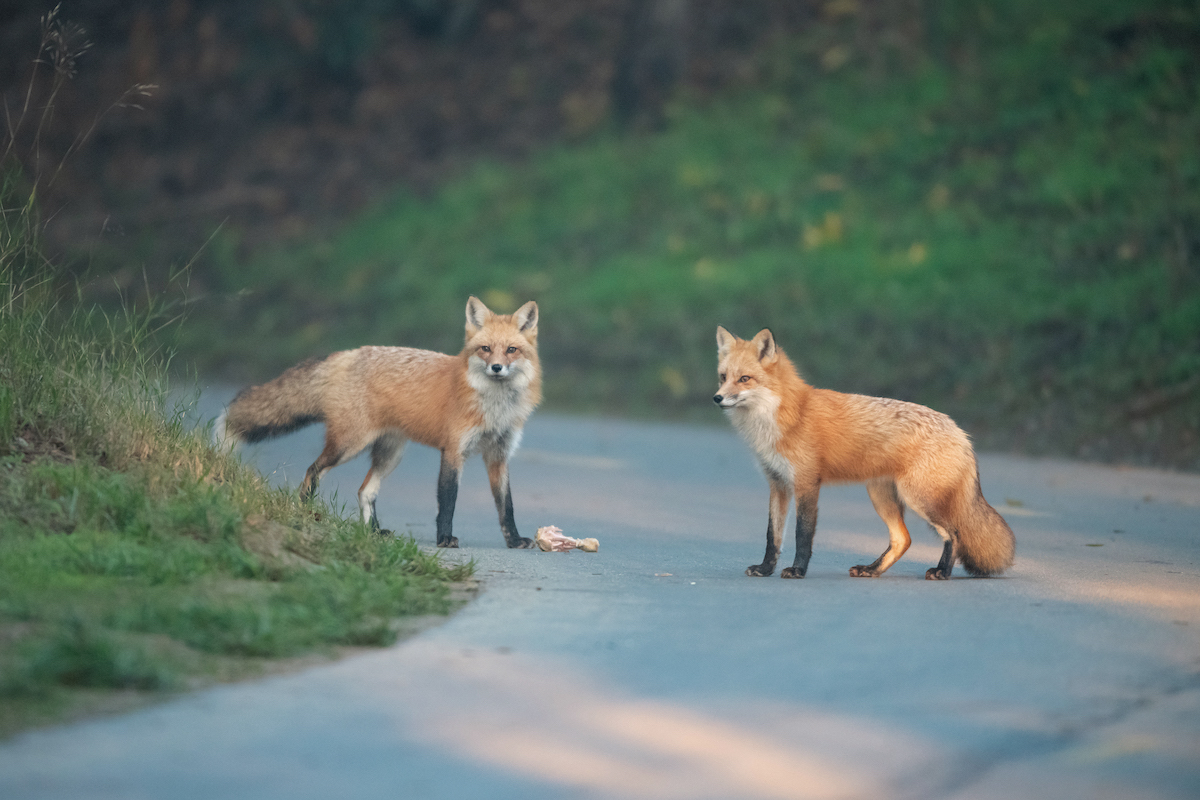
Social media helps instantly spread the word of wildlife sightings. Twenty years ago, few people, if any, in the South Bay would have known so quickly about an eagle nest built in Sonoma County. Social media, eBird, and iNaturalist have become research tools to find photography locations and subjects. Social media posts that include an image’s location and are posted in “real time” can create hot spots. In the San Francisco Bay Area, some nests and dens for desirable species are in well-known, recurring locations. Once the word is out that the animals are back each spring, people sometimes come out in droves. As many as 20 viewers at once, or more.
New camera technology, like high-end mirrorless cameras with eye autofocus and tracking features, makes it easier than ever to “nail the shot,” likely further boosting the pastime’s popularity. People are using cell phones for wildlife photos, too, whether as part of “selfie culture” or an attempt to replicate professional-quality images. Wildlife photos are often shot with long lenses, so it requires getting unreasonably near to the animal to try to achieve that kind of image with a cell phone.
The desire to get ever closer to wildlife further compounds these issues. Wildlife photographers can amass at locations where easily accessible wildlife is reported to be “tolerant,” meaning that an animal won’t flee at the sight of a human being or a car. Our suburbs swallow wildlife habitats, and even new trails in a park can put people in closer proximity to wildlife. Conversely, wildlife that is losing its preferred habitat is increasingly finding ways to survive in our midst. In those cases, some level of tolerance is unavoidable. And some researchers rely on habituation to study their subjects. But there are negative consequences to habituation. When wildlife loses fear of humans, it more frequently approaches people, vehicles, and dwellings—risking being fed, viewed as a nuisance, accidentally poisoned or shot, or euthanized to be tested for rabies, or hit by a car. Our time spent watching wildlife has the potential to cause harm to the wildlife, if we don’t observe with care and moderation.
Baiting wildlife for photos is generally considered unethical, and in my experience only a small percentage of local photographers do it. But it happens. Local northern spotted owls have been baited; people with spotlights came out at night to see this sensitive species in one location last year. I’ve seen and also heard many stories of park-goers intentionally giving food to wildlife. A local resident who feeds feral cats at a South Bay golf course is also bringing meat for the foxes. Picnickers feed weasels watermelon while others bring them dog treats. Coyotes are fed near roads and in parking lots by hikers in the Marin Headlands. The list goes on and on.
The harms caused by human presence vary by species, location, and circumstance. Feeding wildlife so that a creature then actively approaches humans is unquestionably harmful and leads to human-wildlife conflict and animal deaths. And wildlife seeking food near roads often dies from car strikes. The California Fish and Wildlife Journal devoted a special issue in 2020 to the subject, titled, “Effects of Non-consumptive Recreation on Wildlife in California.”
Nonconsumptive recreation includes hiking, biking, boating, wildlife viewing and photography, and much more. Among its effects, studies found: “[Bald] Eagles were most likely to flush when recreationists approached slowly or stopped to observe them … eagles did not resume eating for four hours after disturbance by walkers.” And research on mammals showed “the overall trend is sharply negative: as human activity increased, mammalian activity decreased, regardless of species [or] type of human activity.” The research concluded that “documented effects include detrimental changes to behavior, reproduction, growth, immune system function, levels of stress hormones, other physiological effects, and finally, [to] the survival of individual animals and persistence of wildlife populations and communities.”

Photographers visit these popular locations for different reasons—some to take a photo, see a species or the young of a species for the first time, and observe and learn about behavior. No one’s goal is more or less valid. But when people arrive expecting to easily achieve their goal, that outlook can rapidly shift to feelings of entitlement and resentment of other viewers. Tensions run particularly high when local “regulars” feel a need to protect wildlife from other photographers or hordes of visitors. And much of the animosity could be avoided if people treated both wildlife and other people in the area with respect and empathy.
The harm to photographers is often subtle—verbal run-ins, a moment with a creature or a photo ruined by someone’s lack of courtesy. (If you wouldn’t cut to the front of a line at a grocery store, why not show similar courtesy to photographers in the field, as well as empathy for wildlife?) Typically, joining a photographer without being waved in runs a high likelihood of interrupting wildlife behavior and may prompt an animal to flee, losing a meal if it is hunting. Photographers who prefer solitude may feel intruded on by uninvited onlookers or peers (and yes, if you are looking for solitude, probably best to avoid already crowded spots). While some enjoy the camaraderie and social aspect of the activity, most photographers I know would prefer to shoot alone, if possible.
All of this has generated heated discussion in the field, with tribes of adherents to differing philosophies, finger-pointing about whose fault it is that a location is crowded, or photographers gossiping about each other.
What can parks and communities do to reduce negative impacts on visitors and wildlife? Some local parks have implemented programs to address this issue. To protect northern spotted owls, Marin County Parks has imposed temporary nighttime closures of certain trails, and wildlife team members monitor the owl populations. Marin County Parks collaborate with Marin Audubon to ensure docents are out during nesting season, educating people. Sonoma County Parks implemented a docent program this year on behalf of the long-tailed weasel and strategically placed large signs with tips for keeping weasels wild around the park. Point Reyes National Seashore has signs at trailheads, and volunteer docents to inform the public about best behavior around western snowy plovers, elephant seals, and other marine life.
Posting signs about coexistence with wildlife that advise a required distance from, and prohibitions against feeding, wildlife are helpful. But signs can only do so much. It could also be constructive for local parks, clubs, and organizations to host conversations about location-specific issues and gather input from the different people who visit.
In reality, most parks do not have the staffing or resources to coordinate volunteers to protect wildlife. Some hot spots recur year after year, but other times word gets out about a new site that’s only active for a matter of days or weeks. When there is no official park protection or wildlife is on private property, in my experience local residents and homeowners can feel compelled to try to protect the animals. The situation puts people between a rock and a hard place: Say nothing while poor behavior continues, or say something, which typically leads to a disagreement. All the while watching people get too close and cause visible distress, or perhaps even worse, bring food or photo props to the animals.
What is the solution for individuals? Avoid those places? That’s not feasible for residents if it is their local park. Don’t travel to other counties to visit “popular” spots? That seems unnecessarily restrictive and exclusionary, particularly with socioeconomic considerations, as only locals can then see the animals at all.
The North American Nature Photography Association has a statement on Ethical Field Practices, and if each of us followed its ethical and etiquette recommendations, that would go a long way toward better protecting wildlife and improving human interactions. Audubon also has a guide to ethical bird photography and videography. But this issue extends beyond photographers, so local community forums, media coverage, and public outreach are critical as well.
Some questions to consider, when heading out for photography: What impact will my presence have on the animals I am photographing? How many other photographers are at the same location every day or every week? Am I familiar with signs of stress for this species, so I can leave if I see them? What impact will my presence have on photographers already present? What is a reasonable period of time to stay in this location? How often should I visit this location? Am I blocking the road, a trail, or the bike lane? Am I interfering with another photographer’s shot? Is there a maximum number of people I am comfortable with in a given location? Can we go into the field with consideration, kindness, and common courtesy as our goal? Can we discuss impact with an open mind? Lack of meaningful dialogue just reinforces a me-first culture, where an individual’s goal for a given day becomes more important, more valid, than anyone else’s goals or the long-term survival of an individual animal. As the Rolling Stones put it, “you can’t always get what you want.”
For me, wildlife photography is a solitary pursuit, a chance to be truly present in the moment, taking in not just the sights but also the sounds, smells, and textures of the natural world. For many photographers, time in wild places, sitting with wild animals, is an escape from the stress of everyday life. It is when I have processed the grief of losing a loved one. To protect wildlife and to minimize the chance of creating a hot spot, photographers could delay sharing images of nests, dens, and other sensitive sites for several months, and not post locations. I am mindful of cumulative human exposure for wildlife and adjust my time and presence accordingly. No one is perfect, and I have learned from my own mistakes and improved my practices. Now, if I drive to a nearby location that is increasingly popular and see three or more cars, I make a U-turn to go somewhere else. This provides me with a more intimate, personal experience in the wilderness, and it is less stressful for the wildlife I am hoping to observe and photograph.

